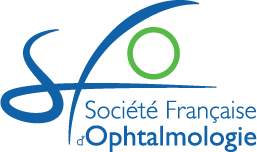The lens-iris diaphragm retropulsion syndrome (LIDRS) corresponds to a brutal deepening of the anterior chamber during phacoemulsification. LIDRS is painful for the patient and sometimes causes intraoperative complications. This study was designed to assess the preoperative risk factors of LIDRS.
Name
Evaluation des facteurs de risque de survenue du syndrome d’approfondissement pathologique de la chambre antérieure. Étude de cohorte prospective
Introduction
Matériels et Méthodes
A prospective open-label observational study was performed between january 2021 and june 2021. Preoperative parameters of consecutive patients who underwent cataract surgery were recorded. LIDRS occurrence was evaluated during surgery and classified into 3 stages. Except for the first patient, a simple and rapid maneuver to separate the iris from the capsule (capsular touch) was performed in all patients with LIDRS.
Résultats
LIDRS occurred in 101 out of 205 included eyes: mild in 73.2% (74/101) , marked in 16.8% (17/101) and severe in 9.9% (10/101). LIDRS eyes had a longer axial length (p<0.01) and a thinner lens than the control group (p<0.01). Univariate logistic regression showed that the main predictive factors of LIDRS were long axial length, decrease lens thickness. LIDRS occurred in 83% (5/6) of eyes with prior vitrectomy. Complications occurred (zonular dehiscence), especially in vitrectomized eyes. The capsular touch allowed in almost all eyes to restore normal chamber depth and to prevent complications.
Discussion
In the current study, the first prospective study of a large cohort of Caucasian patients the incidence of LIDRS was 49% in the total group, 67% in myopic eyes, and 89% in vitrectomized eyes. The main risk factors for the occurrence of this syndrome were young age, axial length over 25mm, and decreased lens thickness. Our study was limited by a potential classification bias when assessing the occurrence of LIDRS. LIDRS frequency may have been overestimated because of the special attention paid during surgery to this problem. The technique of mechanical separation of the iris from the capsule performed in this study was easy and rapid and gave an immediate result.
Conclusion
Myopia and prior vitrectomy were the main risk factors of LIDRS. The capsular touch allowed to resolve LIDRS in almost all eyes. Analysis of preoperative factors can help the surgeon to identify patients at risk and to prevent patient pain and intraoperative complications associated with LIDRS.
